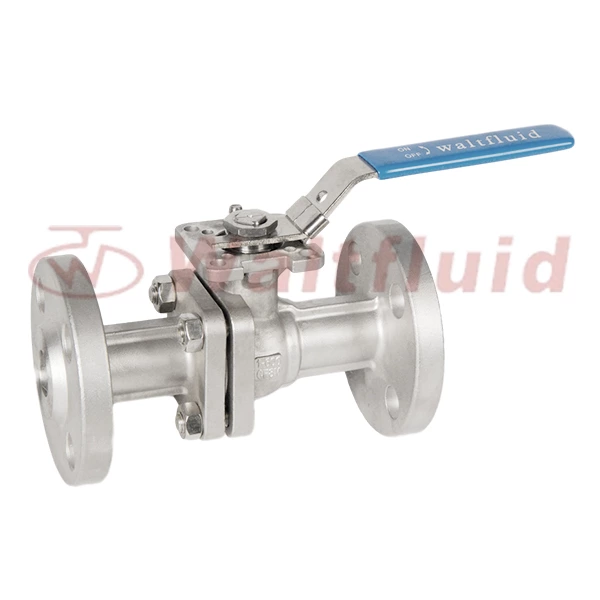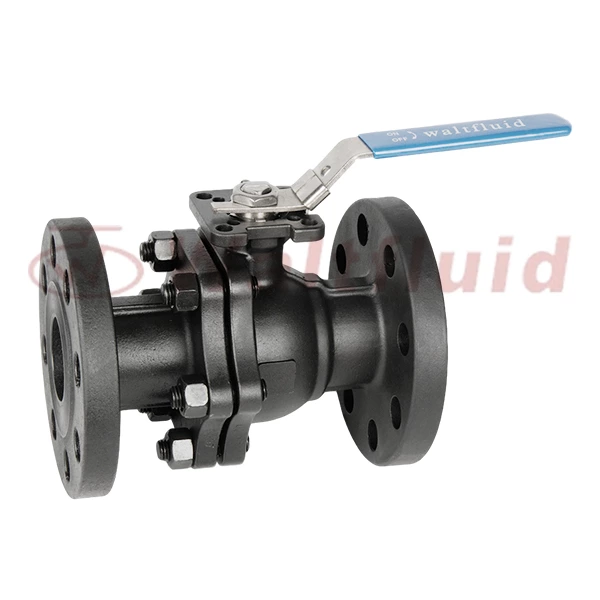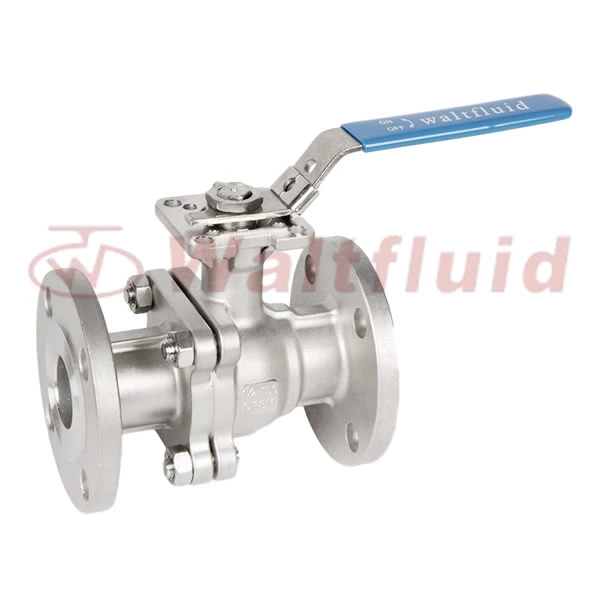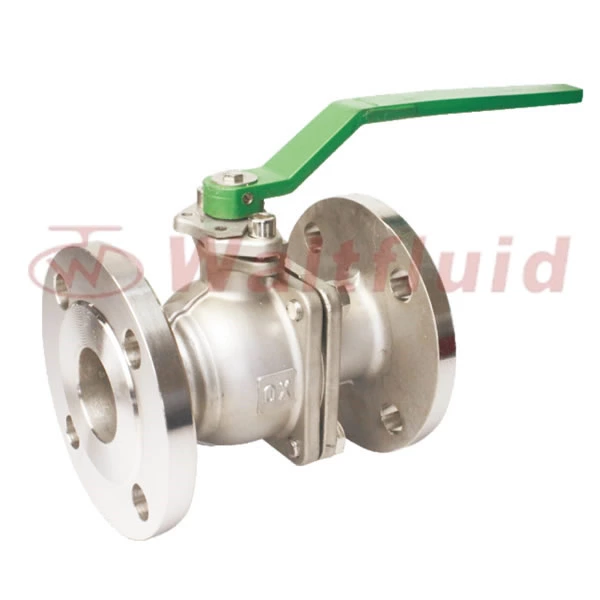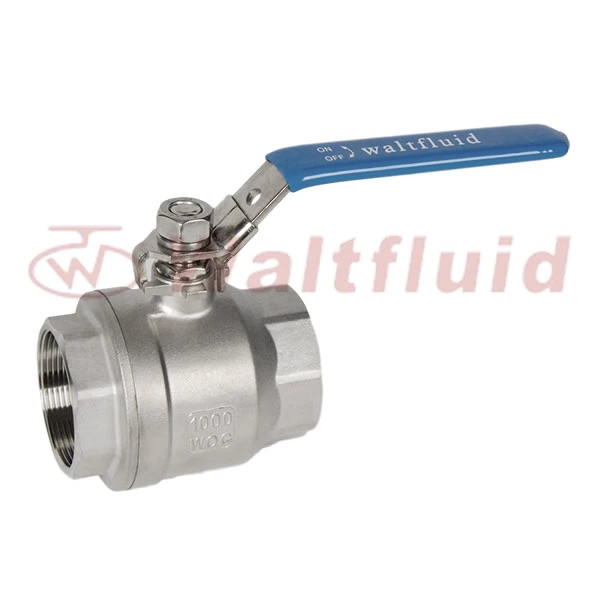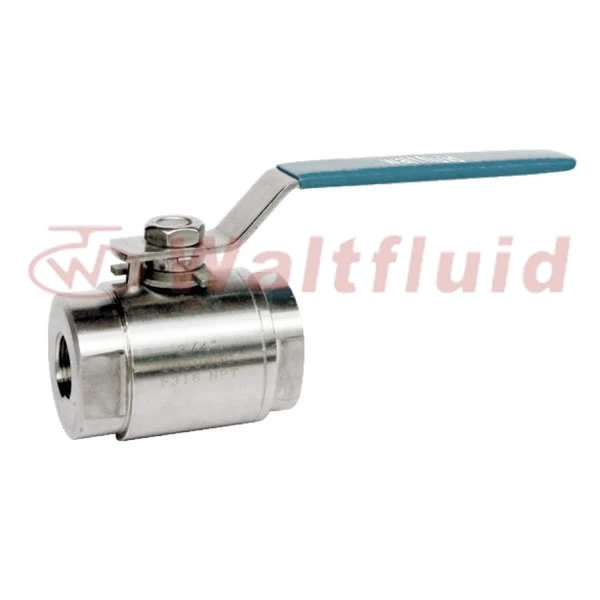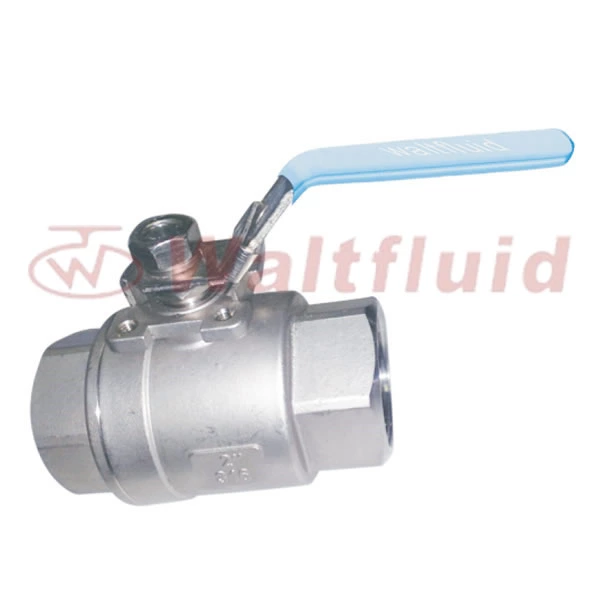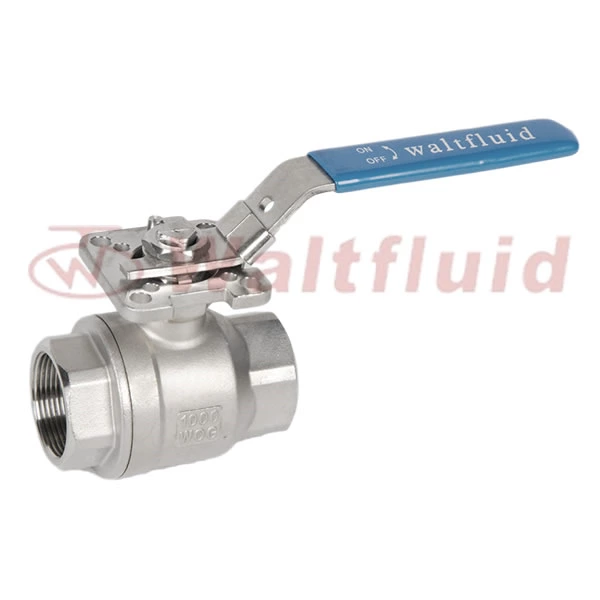Detailed Introduction And Detailed Description Of Stainless Steel Ball Valve
2 Piece Threaded Ball Valve generally has two structures: reduced diameter and non-reduced diameter channel. Regardless of the structure, the flow resistance coefficient of stainless steel ball valves is relatively small. In particular, the so-called full-flow type, that is, the non-reduced diameter ball valve, because its channel diameter is equal to the inner diameter of the pipeline, the local resistance loss is only the friction resistance of the pipeline of the same length, that is, among all valves, this type of ball valve has the smallest flow resistance.
Stainless steel ball valves can be closed tightly with only a 90-degree rotation and a very small torque. The completely equal inner cavity of the valve body provides a very small resistance and straight flow channel for the medium. The main features of stainless steel ball valves are compact structure, easy operation and maintenance, suitable for general working media such as water, solvents, acids and natural gas, and also suitable for media with harsh working conditions, such as oxygen, hydrogen peroxide, methane and ethylene. The ball valve body can be integral or combined. This article mainly briefly describes the restrictive factors of stainless steel ball valves during use.
Stainless steel ball valves are subject to temperature and pressure restrictions:
The nameplate shows the maximum operating pressure allowed by the ball valve at the maximum and minimum operating temperatures.
The operating temperature of valve seats and seals made of PTFE or RTFE should be between -290C and 2000C. The operating temperature of other types of valve seats and seals should be checked by KI factory.
The nominal pressure rating (PN) of stainless steel ball valve indicates the maximum working pressure of the valve under normal temperature. (For example: PN4.0 indicates that the maximum working pressure is 40 Bar (4.0MPa) when the operating temperature is between -290C and 380C).
The working principle of stainless steel ball valve is to open or close the valve by rotating the valve core. Stainless steel ball valve is light and small in size, can be made into a large diameter, has reliable sealing, simple structure, and is easy to maintain. The sealing surface and the spherical surface are often in a closed state and are not easily eroded by the medium. It is widely used in various industries.
Stainless steel ball valve and plug valve are valves of the same type, only its closing part is a sphere, and the sphere rotates around the center line of the valve body to achieve a valve open and closed.
Stainless steel ball valves are mainly used in pipelines to cut off, distribute and change the flow direction of the medium. Stainless steel ball valves are a new type of valve that is widely used.
Stainless steel ball valves can be divided into straight-through, three-way and right-angle types according to their channel positions. Three-way stainless steel ball valves are T-type and L-type. The T-type can connect three orthogonal pipelines to each other and cut off the third channel, which plays a role in diversion and confluence. The L-type can only connect two orthogonal pipelines, and cannot simultaneously maintain the interconnection of the third pipeline, and only plays a distribution role.
1. The three-way stainless steel ball valve adopts an integrated structure in structure, a sealing type of 4-sided valve seat, fewer flange connections, high reliability, and a lightweight design.
2. The three-way ball core is divided into T-type and L-type, with a long service life, large flow capacity and low resistance
3. Stainless steel ball valves are divided into single-acting and double-acting types according to the action type. The characteristic of the single-acting type is that once the power source fails, the stainless steel ball valve will be in the state required by the control system.
Stainless steel ball valves can be closed tightly with only a 90-degree rotation and a very small torque. The completely equal inner cavity of the valve body provides a very small resistance and straight flow channel for the medium.
Stainless steel ball valves can reduce the resistance of the pipeline system in two ways: one is to reduce the fluid flow rate, for which it is necessary to increase the pipe diameter and valve diameter, which often has an adverse effect on the economy of the pipeline system, especially for the cryogenic transportation system (liquid hydrogen). So why do stainless steel ball valves have the characteristics of increasing service life?
1. Reduce the local resistance of the valve, so the ball valve naturally becomes the choice.
2. The ball valve is opened and closed quickly and conveniently.
Because the ball valve only needs to turn the handle 90° to complete the full opening or closing action under normal circumstances, it is easy to achieve rapid opening and closing. It can achieve rapid opening and closing, and the opening and closing time of some structures is only 0.05~0.1s to ensure that it can be used in the automation system of the test bench. When the valve is opened and closed quickly, the operation is impact-free.
3. The ball valve has good sealing performance.
The valve seats of most ball valves are made of elastic materials such as polytetrafluoroethylene. The sealing pair composed of metal and non-metallic materials is usually called soft seal. Generally speaking, the sealing performance of soft seals is easy to ensure, and the processing accuracy and surface roughness requirements of the sealing surface are not very high.
4. The service life of the ball valve is long.
Because polytetrafluoroethylene has good self-lubrication, the friction and wear with the ball is small, and the improvement of the ball processing technology reduces the roughness, thereby increasing the service life of the ball valve.
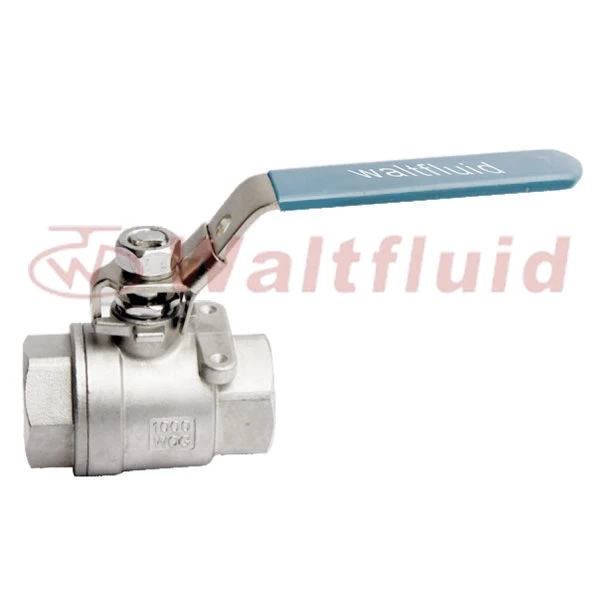
 English
English 中文
中文 Pусский
Pусский  Español
Español
